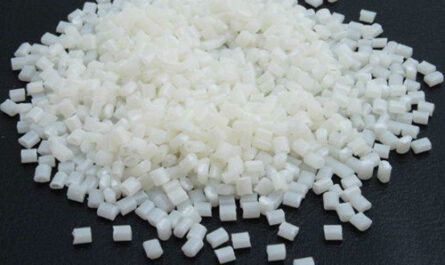Polycrystalline Silicon Market:
Polycrystalline silicon, also known as polysilicon or poly-Si, is a high purity form of silicon used in electronics and photovoltaic applications. It consists of crystalline silicon grains of random orientation bonded together and containing a small amount of dopants. As technology continues to progress, the use of polysilicon is becoming increasingly important in various electronics and renewable energy applications..
Properties of Polysilicon
Polysilicon possesses certain desirable material properties that make it well-suited for various electronics and solar applications. Some key properties of polysilicon include:
– High Purity: Polysilicon can be produced with a purity level of over 99.9999%, making it suitable for applications requiring high-purity silicon like semiconductors. Impurities are strictly controlled during the manufacturing process.
– Crystalline Structure: Though comprised of randomly oriented silicon crystal grains, polysilicon retains many properties of single-crystal silicon due to its crystalline structure. It can be doped to alter its electrical conductivity.
– Photovoltaic Performance: When doped and fabricated into solar cells, polysilicon exhibits reasonable photovoltaic performance in converting sunlight to electricity. Its efficiency is lower than single-crystalline silicon but higher than amorphous silicon.
– Thermal Stability: Polysilicon possesses good thermal stability and can withstand high temperatures required during processing steps such as diffusing dopants or depositing coatings without decomposing.
– Availability: Polysilicon can be produced through cost-effective processes to offer a more readily available alternative to single-crystal silicon for various mainstream and emerging applications.
Manufacturing Polysilicon
The manufacturing of high-purity polysilicon involves several key steps:
– Trichlorosilane Production: Raw materials such as quartz stone or metallurgical grade silicon are processed to produce trichlorosilane gas in reactors.
– Purification: Trichlorosilane is purified to remove impurities through processes like distillation or contacting with molten salts. This produces highly pure trichlorosilane.
– Deposition: Purified trichlorosilane is decomposed in reactors containing heated silicon surfaces where it deposits as a polysilicon layer through chemical vapor deposition.
– Doping: In-situ doping with phosphorous or boron is performed to impart the desired electrical conductivity during the deposition process.
– Chipping and Milling: The deposited polysilicon is sliced into chunks or granules and milled into a fine powder for further processing or direct use.
– Refining: Additional refining steps may involve sintering or shaping the polysilicon into desired geometries suitable for products.
Strict control is maintained throughout manufacture to ensure the high purity required in end products.
Applications of Polysilicon
Thanks to its attractive properties and large-scale economical production, polysilicon finds numerous important applications:
Semiconductor Industry
– Used to manufacture integrated circuits, processors and other chips where it acts as the base material. Doped polysilicon is used for gate electrodes in MOS transistors.
Solar Photovoltaic Cells
– Serves as the active material in most current solar module designs. Doped p-type and n-type polysilicon are fabricated into solar wafers, cells and panels.
Display Industry
– Enters the manufacture of TFT LCDs used in screens. Polysilicon Thin Film Transistors are key components that switch individual pixels on/off.
Thermal & Pyroelectric Detectors
– Doped polysilicon detects infrared or thermal radiation and is used in cameras, motion sensors, thermal imagers etc.
Light Emitting Devices
– Polysilicon can form the basis of LEDs (Light Emitting Diodes) once doped and fabricated appropriately. Used in full-color displays.
With continued technological progress and manufacturing improvements, the applications of polysilicon are bound to grow even more diverse going forward. It will remain a staple material for both microelectronics and sustainable energy industries.
polysilicon is an important high-purity form of silicon that serves as a building block in numerous electronic and photovoltaic applications. While lower in performance than single-crystal silicon, it can be produced on a mass scale economically through processes such as CVD. Areas where polysilicon excels are MOS transistors for CPUs, solar cells, displays and infrared detectors. With its thermostability, high purity and controllable conductivity, the fundamental role of polysilicon looks set to continue expanding in electronics as well as emerging renewable technologies of the future. Overall, as a processed form of the second most abundant element on Earth, polysilicon will remain a strategic material for both traditional and developing silicon-based product sectors.
*Note:
1. Source: Coherent Market Insights, Public sources, Desk research
2. We have leveraged AI tools to mine information and compile it


